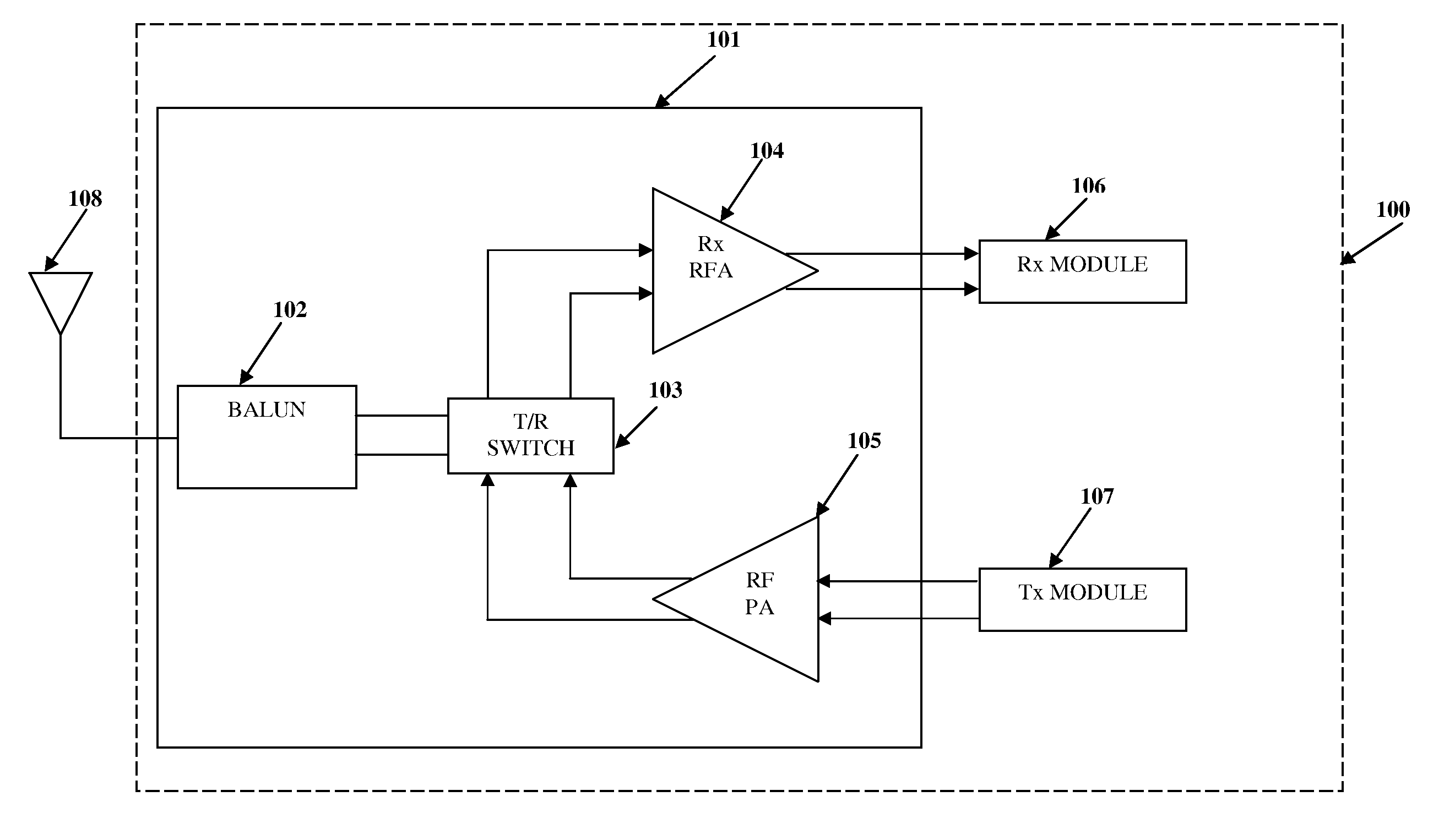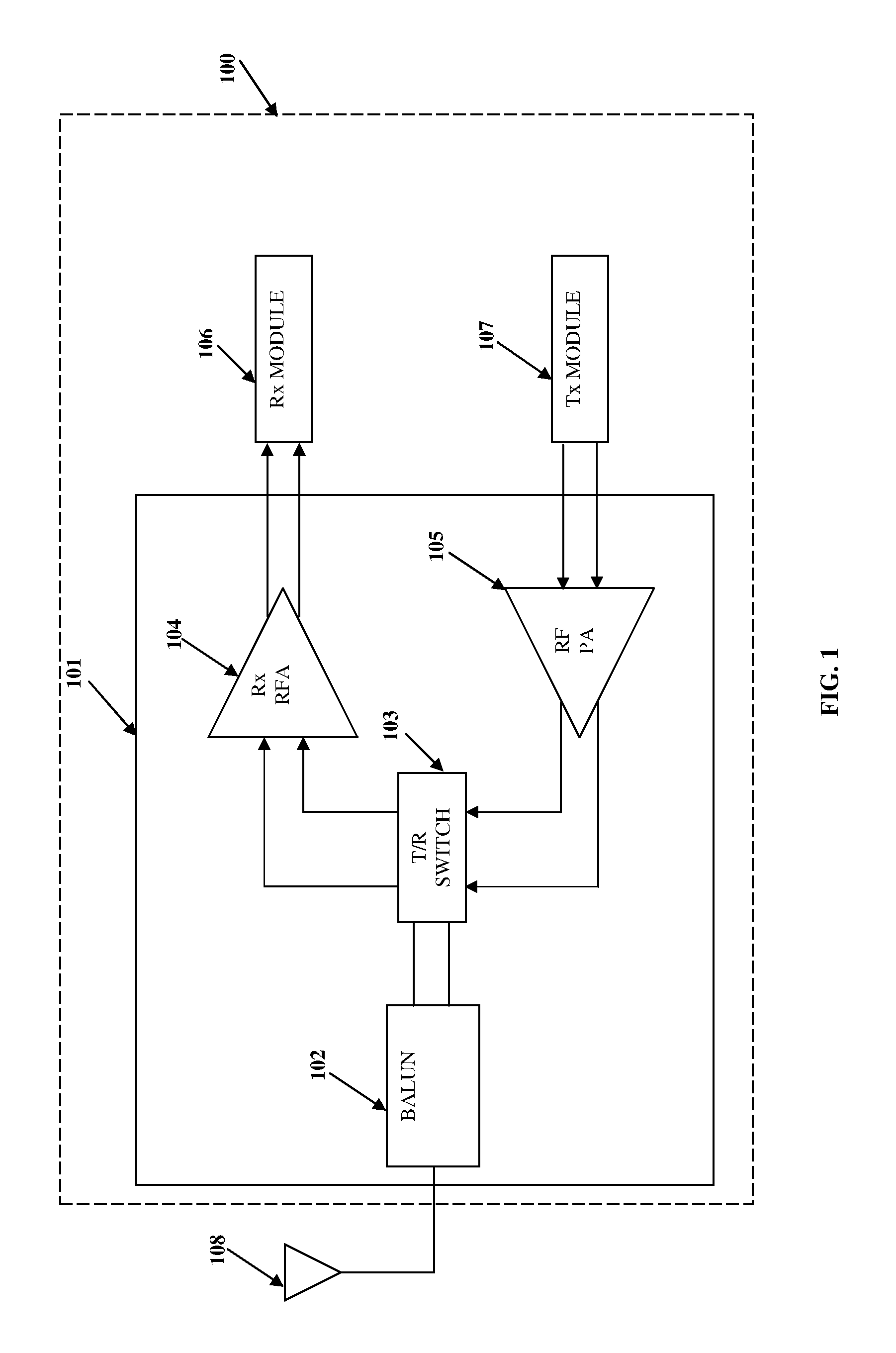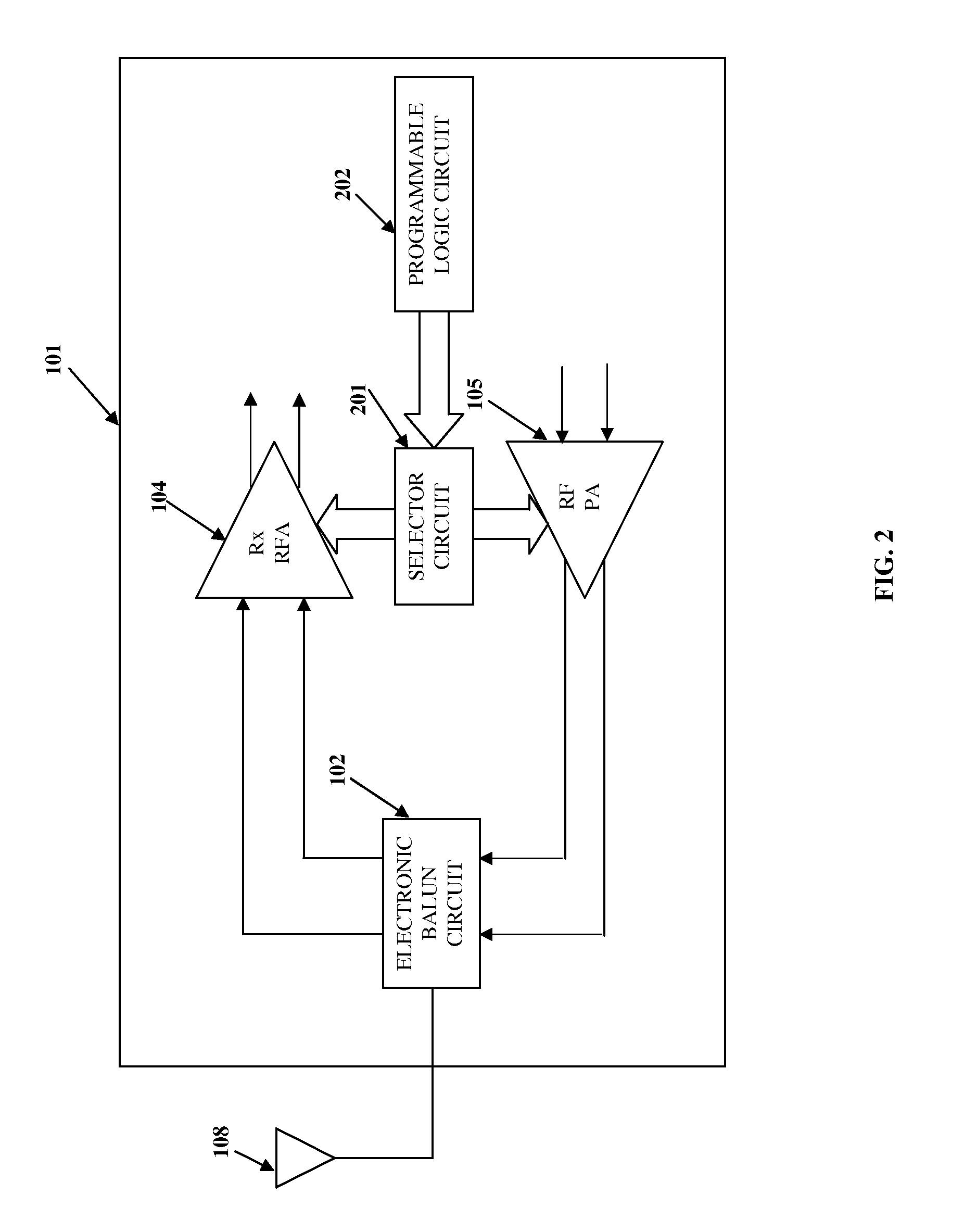Integrated Radio Frequency Front-end Circuit
a radio frequency front-end circuit and integrated technology, applied in amplifiers, electrical devices, semiconductor devices/discharge tubes, etc., can solve the problems of many internal or external components, complex methods, and insufficient characterization of on-chip radio frequency (rf) transformer components, so as to reduce chip area (real estate), reduce energy dissipation, and reduce signal loss
- Summary
- Abstract
- Description
- Claims
- Application Information
AI Technical Summary
Benefits of technology
Problems solved by technology
Method used
Image
Examples
Embodiment Construction
[0024]FIG. 1 illustrates a block diagram of a front-end 101 of a radio frequency (RF) transceiver 100 having a transmit and receive (T / R) switch 103. The radio frequency (RF) transceiver 100 is used to implement two-way radio communication and may be incorporated in wireless radio communication devices. The radio frequency (RF) transceiver 100 comprises an antenna 108, a balun (balanced / unbalanced) 102, the transmit and receive (T / R) switch 103, a receiver radio frequency amplifier (Rx RFA) 104, a radio frequency power amplifier (RFPA) 105, a receiver (Rx) module 106, and a transmitter (Tx) module 107. The balun 102, the transmit and receive (T / R) switch 103, the receiver radio frequency amplifier (Rx RFA) 104, and the radio frequency power amplifier (RFPA) 105 form the radio frequency (RF) front-end 101, where the receiver radio frequency amplifier (Rx RFA) 104 is for example, a low noise amplifier (LNA). The antenna 108 receives an incoming single-ended radio frequency (RF) signal...
PUM
 Login to View More
Login to View More Abstract
Description
Claims
Application Information
 Login to View More
Login to View More - R&D
- Intellectual Property
- Life Sciences
- Materials
- Tech Scout
- Unparalleled Data Quality
- Higher Quality Content
- 60% Fewer Hallucinations
Browse by: Latest US Patents, China's latest patents, Technical Efficacy Thesaurus, Application Domain, Technology Topic, Popular Technical Reports.
© 2025 PatSnap. All rights reserved.Legal|Privacy policy|Modern Slavery Act Transparency Statement|Sitemap|About US| Contact US: help@patsnap.com



